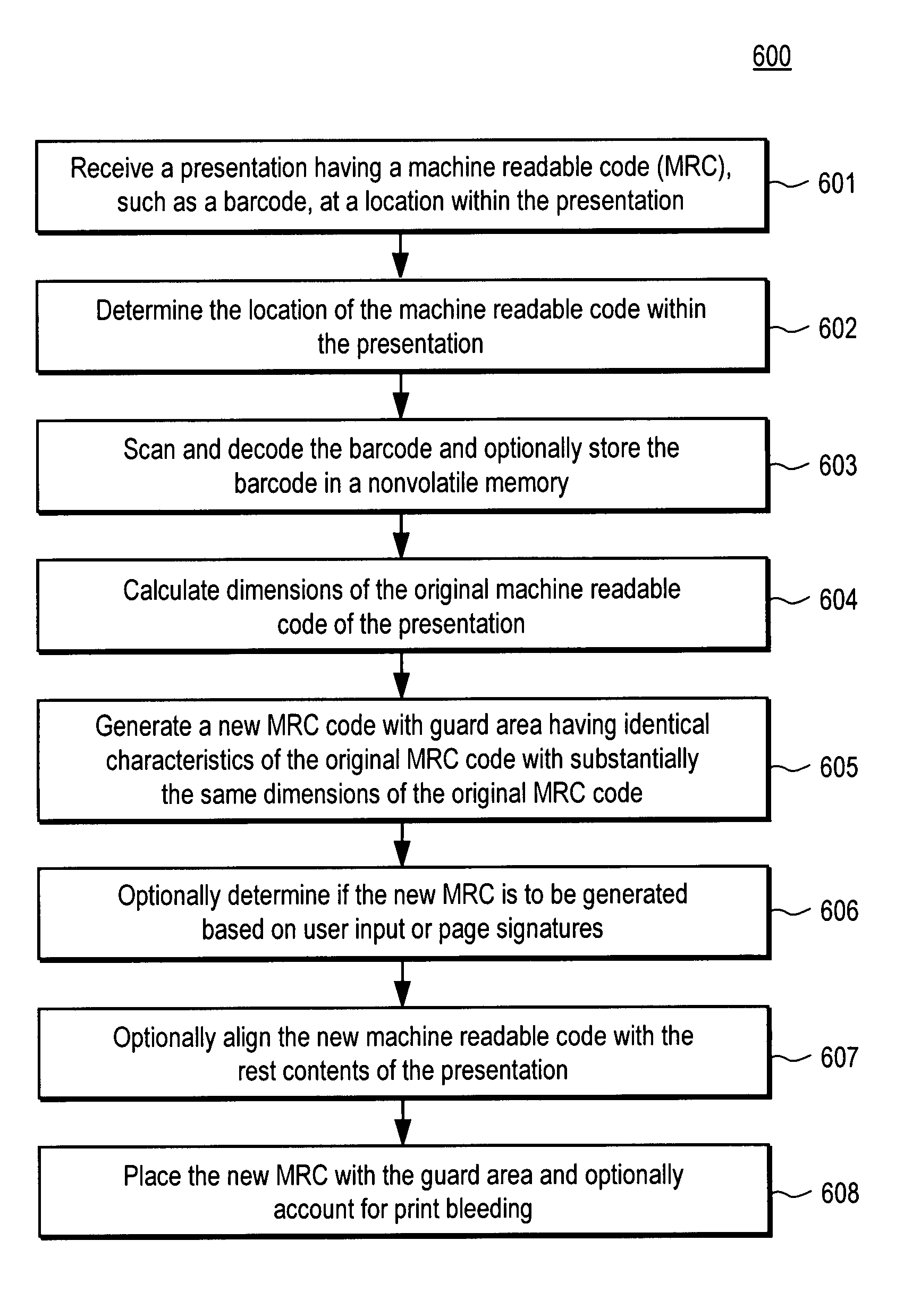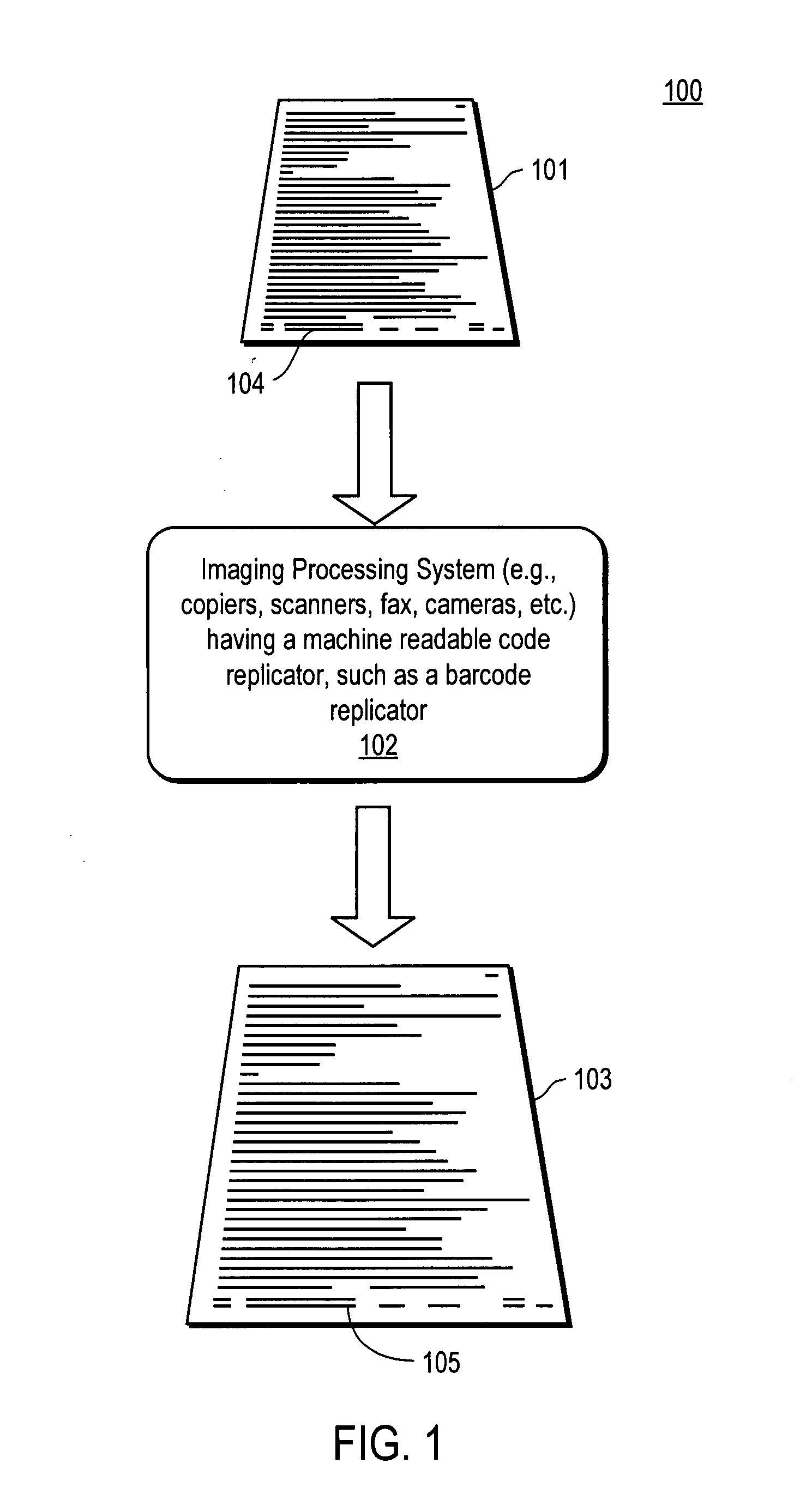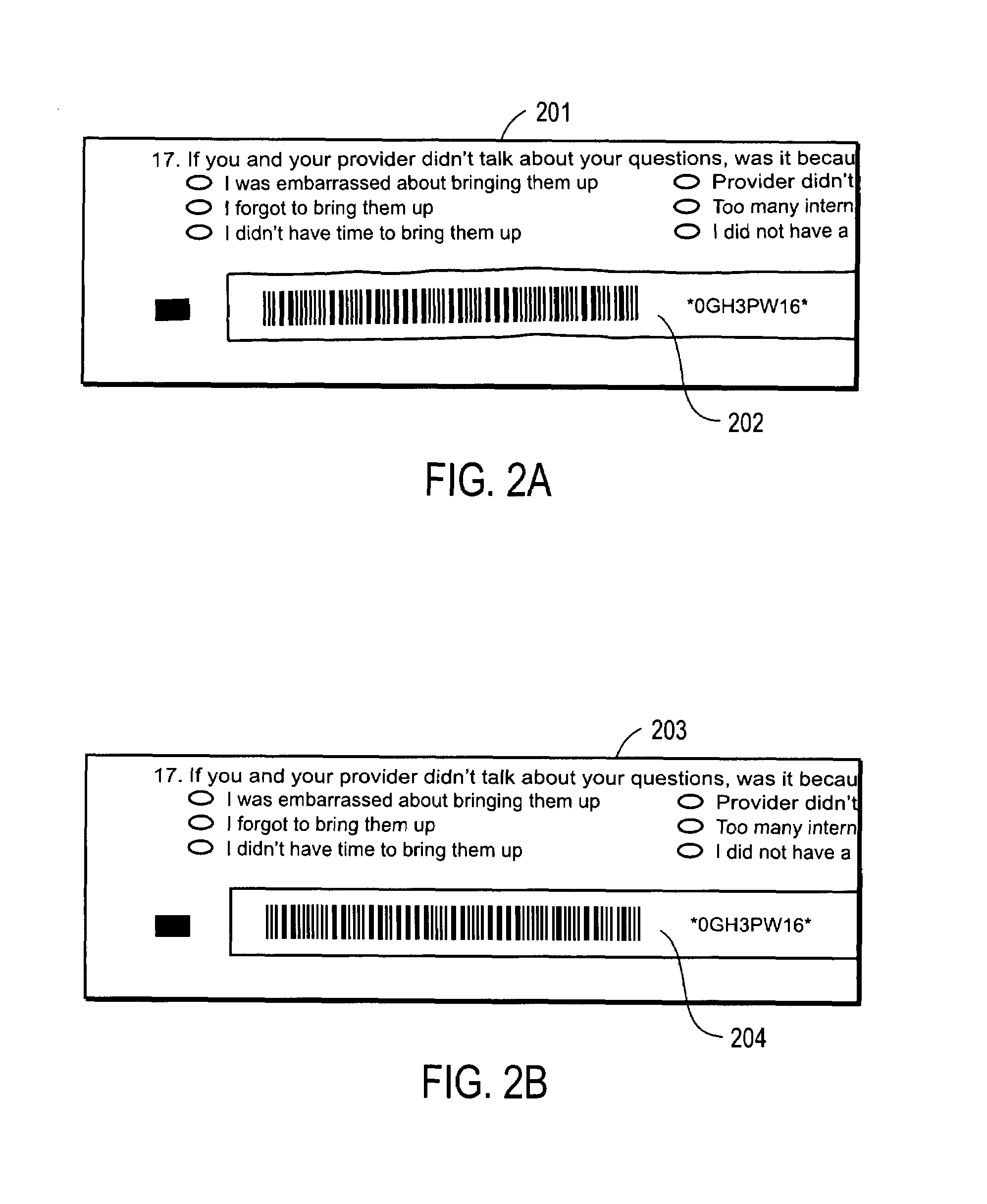Automatic cleanup of machine readable codes during image processing
a technology of image processing and automatic cleanup, applied in the field of machine readable codes, can solve the problems of changing the appearance of the code, affecting the accuracy of image processing,
- Summary
- Abstract
- Description
- Claims
- Application Information
AI Technical Summary
Benefits of technology
Problems solved by technology
Method used
Image
Examples
Embodiment Construction
[0018]An image processing device for processing machine readable codes (MRCs) is described. In one embodiment, a scanner, which may be embedded as part of an image processing device, such as a copier, a fax machine, a scanner, or a camera, etc., is able to locate and decode an MRC, such as barcode. In one embodiment, the scanner replaces only the sub-image containing the MRC within a document image (typically a rectangle) with a new, clean image of the MRC. The document image with the new MRC may then be stored and / or printed. When the document image is printed, the new MRC will be easier to read than the original one. As a result, the MRC, which passes through the image processing devices having these techniques, will not degrade over a time period. Note that for purposes herein the term document may include one or more pages.
[0019]In one embodiment, after an exemplary image processing device receives a document having one or more MRCs, such as barcodes, the image processing device...
PUM
 Login to View More
Login to View More Abstract
Description
Claims
Application Information
 Login to View More
Login to View More - R&D
- Intellectual Property
- Life Sciences
- Materials
- Tech Scout
- Unparalleled Data Quality
- Higher Quality Content
- 60% Fewer Hallucinations
Browse by: Latest US Patents, China's latest patents, Technical Efficacy Thesaurus, Application Domain, Technology Topic, Popular Technical Reports.
© 2025 PatSnap. All rights reserved.Legal|Privacy policy|Modern Slavery Act Transparency Statement|Sitemap|About US| Contact US: help@patsnap.com



